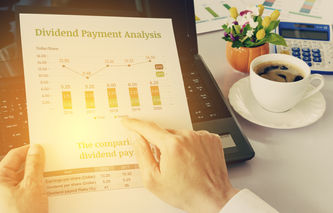Definition
The term market value added refers to a calculation that allows the investor-analyst to quantify the difference between the market value of a company and the value of its invested capital. A well-run company should always have a positive value for market value added.
Calculation
Market Value Added = Value of Equity + Value of Preferred - Book Value of Equity
Where:
The value of equity is equal to the number of shares of common stock times the current market price of common stock.
The value of preferred is equal to the number of shares of preferred stock times the price of preferred stock.
The book value of equity can be found on the company's balance sheet, and can be determined by subtracting total liabilities from total assets.
Explanation
Market performance measures allow the investor-analyst to understand the company's ability to achieve their high level business profitability objectives. This is usually assessed by examining metrics such as insider transactions, capture ratios, enterprise value, capitalization rates and price to earnings ratios. Market performance metrics provide analysts with a way to determine if a company is going to successfully execute their business plan. One of the ways to understand how effective management is at running the company is by calculating its market value added.
A company has several options when it comes to funding assets subsequently used to increase the value of the organization. For example, it can borrow money by issuing bonds, it can retain earnings, and it can raise capital by selling shares of common stock and / or preferred stock. Over time, shareholders should expect the value of their shares to increase. This happens because the money invested by shareholders is subsequently invested by management in assets that produce additional profits. One of the was to understand how effective a company's management team is at producing profits is by measuring a company's market value added.
Subtracting the book value of equity from the market capitalization of a company (including both common and preferred stock), yields a value that provides insights into the management team's effectiveness. However, the investor analyst must use caution when interpreting these results. For example, market value added is stated in terms of dollars. Large capitalization stocks should, by their very nature, yield higher dollar values for market value added calculations. When examining trends over time, the analyst must also be aware of the overall market conditions. For example, a recent bull market may have more to do with a recent uptick in market value added than decisions made by the company's management team.
Example
Company ABC's newly elected CFO is concerned the company has not done a good job of listening to Wall Street analysts and the market price of the company's common stock is under-valued relative to the company's ability to create profits. To test her theory, she asked her analytical team to calculated Company ABC's current market value added. As part of their research, the team found the following:
Company ABC has issued 10,500,000 shares of common stock
The current market price of Company ABC's common stock is $16.25
The value of the company's preferred stock was $21,000,000
The company's book value of equity was equal to $182,100,000
Calculating the company's market value added:
= (10,500,000 x $16.25) + $21,000,000 - $182,100,000= $170,625,000 + $21,000,000 - $182,100,000, or $9,525,000
The CFO was disappointed to find investors weren't willing to pay a higher premium to hold shares of common stock. She immediately called in the vice president of investor relations to figure out why industry analysts were not issuing more buy recommendations.




